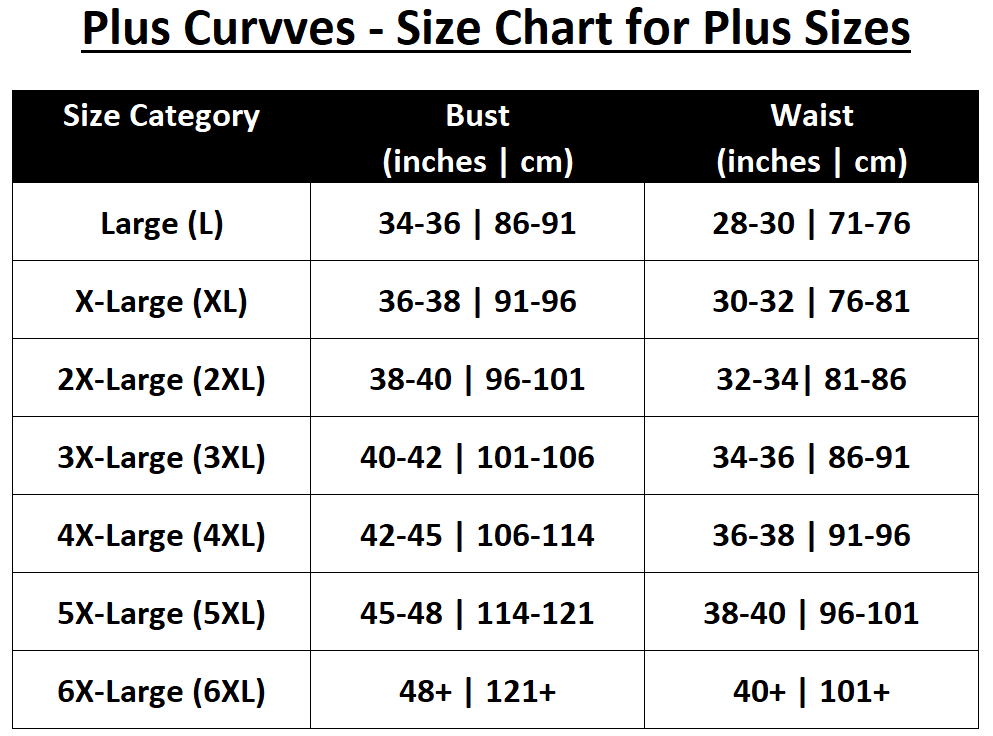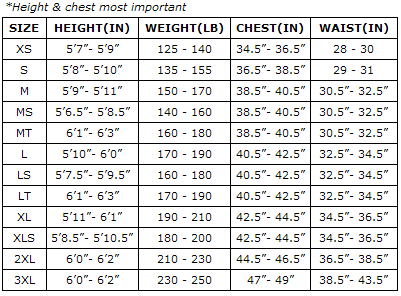Have you ever stood before a clothing rack, overwhelmed by the alphabet soup of sizes? It’s a common struggle, especially when you encounter the seemingly daunting “XXL” or “XL” labels. But fear not, dear fashion enthusiasts, for understanding these sizes is the key to unlocking confidence and finding the perfect fit. Join us as we navigate the world of sizes, ensuring you never feel lost in the aisles again.

Image: www.pluscurvves.com
Let’s start with the basics. “XXL,” “XL,” “L,” “M,” and “S” are letters representing numerical sizes in clothing. These letters are commonly used to express garment sizes for men, women, and sometimes children. While the exact measurements of an “XL” may differ slightly depending on the brand and specific garment, the basic principle remains the same. These letters are simply a way to communicate a garment’s size, ensuring you choose pieces that flatter your figure.
The History of Standardized Sizes: A Journey to Fit
The concept of standardized sizing has a history rooted in practicality and efficiency. Prior to the late 19th century, clothing was often custom-made, tailored to individual body measurements. This method, while ensuring perfect fit, was time-consuming and expensive. As mass production emerged, the need for a standardized system arose. The letter-based size system, reflecting a range of body measurements, was a revolutionary solution. It allowed for the efficient manufacturing and distribution of clothing, making fashion more accessible to a broader population.
Understanding the “XL” and Beyond: A Guide to Size Conversions
Now, let’s dive into the details of “XL” and its companions. The letter “L” typically represents “Large,” “XL” represents “Extra Large,” and “XXL” represents “Extra Extra Large.” These sizes are meant to accommodate individuals with larger frames and body mass. The numerical equivalent of “XL” can vary depending on the brand, but it generally falls within the larger end of the size chart.
For a more precise understanding, many brands provide size charts that correlate these letters to specific chest, waist, and hip measurements. However, it’s crucial to remember that size charts can vary, making it essential to consult the individual brand’s guide for accurate information.
Decoding the Mystery of Variations: Understanding the Nuances
While we’ve established a general framework for understanding “XL” and its counterparts, the world of sizing can be a bit nuanced. Different brands often adopt slightly different interpretations of these sizes, adding to the confusion. Some brands may use “XL” to refer to a larger size than others. This difference in measurement can stem from various factors, including the brand’s target market, its design philosophy, and the specific type of garment being made.

Image: www.ebay.at
Busting Common Myths: Addressing Size Stigma
It’s important to address the common misconception that larger sizes are inherently less fashionable or stylish. This prejudice is outdated and harmful, perpetuating a narrow view of beauty and style. Modern fashion has embraced inclusivity, celebrating diverse body types and promoting body positivity. The beauty of fashion lies in its ability to express individuality and enhance our unique features, regardless of size. Don’t let outdated societal norms dictate your fashion choices; embrace the size that feels comfortable and flattering.
A Word on Sustainability: Shopping Smart and Consciously
As you navigate the world of sizes, it’s also crucial to consider sustainability in your fashion choices. Buying clothing that fits well and lasts longer significantly reduces environmental impact. Investing in quality garments, carefully considering your needs, and prioritizing ethical brands are all steps towards responsible consumption. Remember, conscious shopping can make a positive difference for our planet and contribute to a more sustainable future.
Xxl Xxl Xl Xxl Size In Cm
The Takeaway: Embracing Fit and Confidence
Understanding the nuances of sizes, from “XL” to “XXL,” is essential for finding clothing that makes you feel confident and comfortable. By embracing the right size and celebrating your unique body type, you empower yourself to express your personal style in a way that feels authentic and true to you. Remember, fashion is about embracing individuality, and the perfect fit starts with understanding your body and finding garments that make you feel good.





